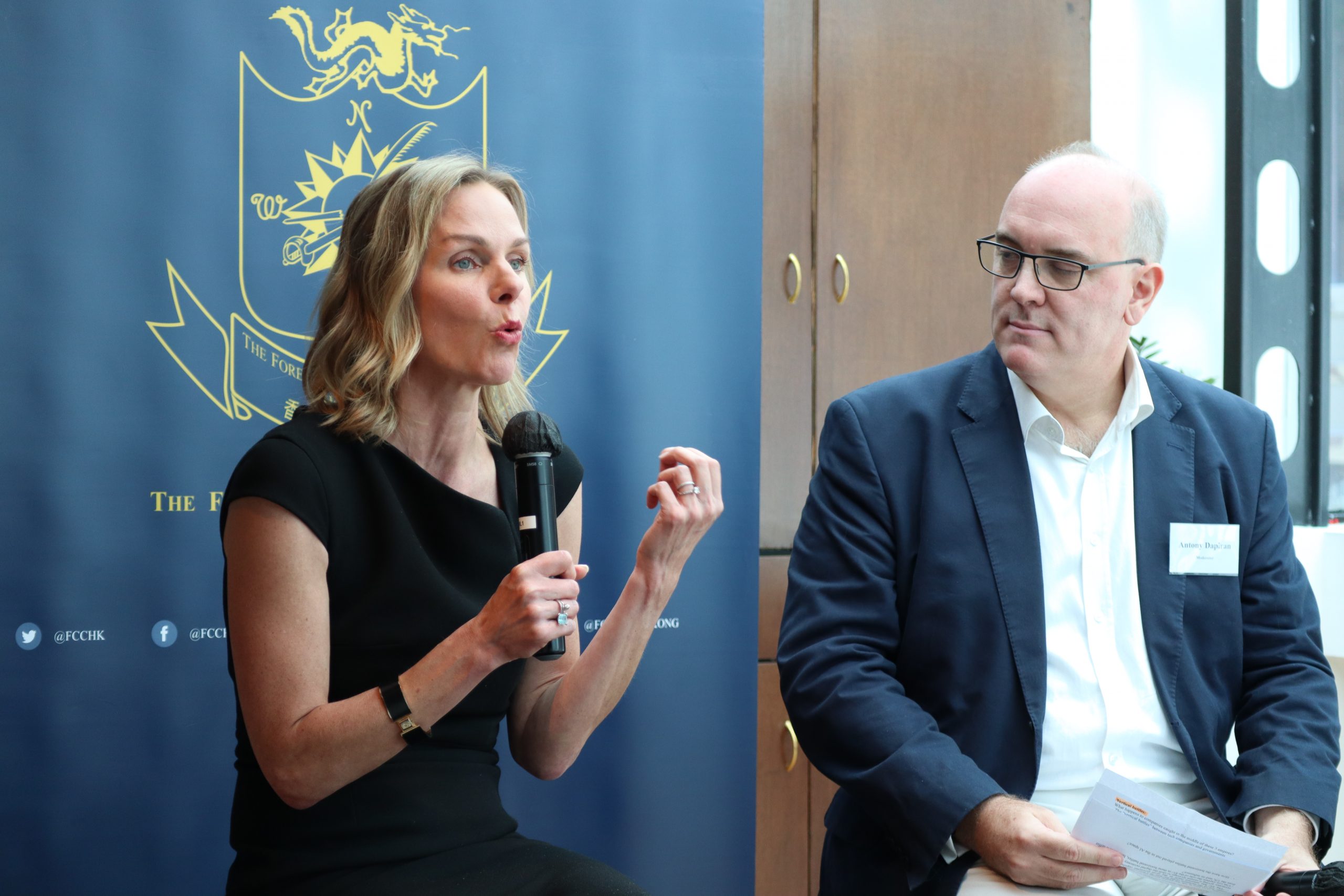
Control over AI is one of the most important battles for China, EU, and US, according to digital regulation expert Anu Bradford
With AI’s exponential growth and its increasing uses in nearly all sectors, governments across the world are racing to keep this advancing technology under their control. Three key players have emerged in the global battle in keeping tech companies in check — China, the European Union, and the United States — each with their own unique approach and philosophy towards governance.
But alongside their internal power struggles, these three players are also competing against each other in exporting their style of regulation to the rest of the world, and there’s no clear leader in sight.
To break down the dynamics of AI regulation, the FCC hosted a Club Lunch discussion on September 20 with Professor Anu Bradford from Columbia Law School. Bradford is an expert in international trade law and digital regulation, as well as the author of Digital Empires: The Global Battle to Regulate Technology, which was published in September 2023.
“There’s a recognition that AI is one of the most important ‘theaters of war,’” Bradford said. “That’s where the most important battles are being fought, and that’s where you cannot afford to be left behind.”
Alongside FCC Professional Committee member Antony Dapiran who served as the moderator of the talk, Bradford explained the differences between AI regulation’s “horizontal” battles (between different governments) and “vertical” battles (between governments and their respective tech companies). While the vertical battles result in either self-regulation by tech companies or government overreach, horizontal battles highlight the different approaches by the three main regulation players and how they attempt to export their style of regulation.
China takes on a state-driven approach similar to how the rest of the country is governed. The US is market-driven, meaning that free speech and internet, along with innovation, are core values that guide legislation. On the other hand, the EU is rights-driven — the democratic rights of internet users are the top priority for European lawmakers.

Both the US and EU are considered “liberal democracies” in the tech world while China is more authoritative, yet it is China that poses a significant challenge in the US and EU’s efforts to extend their methods of regulation to the rest of the world.
“It’s the Chinese model that holds greater appeal,” said Bradford, citing higher surveillance as one of the reasons why countries with higher crime rates than the US and EU might adopt China’s way of using AI.
Another reason why other countries might idealize China’s model is due to a critical look at how technological innovation still exists despite the heavy regulation that the US and EU constantly warn against.
“There’s been this notion that the American model is partially superior because people are free, and when you are free, freedom is necessary for innovation,” she said. “China has challenged that notion. China has shown that even though it is not free, it has been able to innovate.”
Additionally, Bradford cited the US’ failed attempts at enforcing its own tech companies to self-regulate, resulting in growing concerns over the privacy and data safety of American internet users.
“The American digital empire is declining,” she said. “There’s very little faith anymore in the tech companies’ self-regulation. Even the US is slowly abandoning its hardcore commitment to free markets and sort of recognizing it hasn’t provided a society that is necessarily free or where democracy is more robust.”
However, China does have one limitation: generative AI. This is where Bradford explains that the US has a significant advantage over China given the Chinese government’s level of censorship, which results in the data pool for Language Learning Models to train being drastically reduced.
“That might be the moment for the US to say, ‘look, ultimately there are limits to your [China’s] innovations in certain domains of technology where you are restricting information,’” she said.
A couple of outliers that Bradford mentioned in her talk are India and Japan, who both pick and choose the elements from the three styles of regulation and aren’t necessarily emerging as their own separate digital empires.
Mixed styles of regulation like these also leave room for increased influence from either the authoritative models or tech companies that pose major risks to the US and EU models.
“That leaves the the US and the EU with a very big challenge that if they cannot show to themselves and to the world that there is a liberal democratic way to govern tech companies, the true digital empires are either the authoritarians or the tech companies, and that is a very disconcerting outcome for anybody who believes in liberal democracy as a foundation for human engagement and for our digital society,” Bradford concluded.
Digital Empires: The Global Battle to Regulate Technology is now available on Amazon.
Watch the full talk on our YouTube channel below:




















